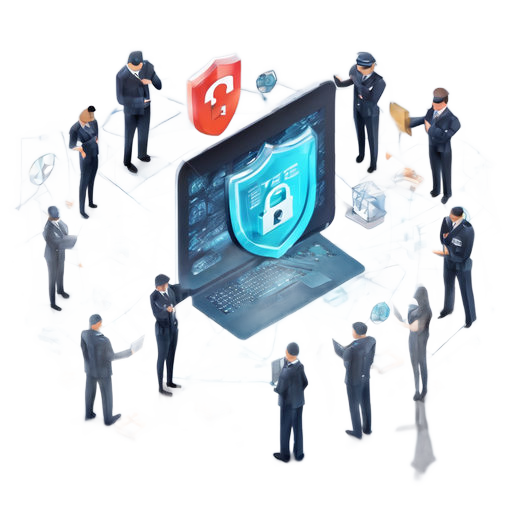Revolutionizing Cybersecurity: Harnessing the Power of AI and Threat Intelligence in Modern Security Operations Centers
In the ever-evolving world of cybersecurity, staying ahead of potential threats is vital. The Security Operations Center (SOC) serves as the frontline defense, and with the rise of AI and threat intelligence, it’s advancing at an unprecedented rate. This blog explores how AI and threat intelligence are reshaping SOCs and why adopting these technologies is crucial for contemporary cybersecurity.
The Evolution of the Security Operations Center
The traditional Security Operations Center (SOC) has been the nerve center for monitoring, detecting, and responding to cybersecurity incidents. However, with the growing complexity of cyber threats, traditional methods are no longer sufficient. The integration of AI and advanced threat intelligence has marked a significant evolution in SOC capabilities.
AI and Threat Intelligence: Transformative Forces for SOCs
- Enhancing Threat Detection with AI
Artificial Intelligence (AI) has revolutionized threat detection. Unlike traditional methods that rely on predefined rules and signatures, AI can analyze vast amounts of data in real-time, identifying anomalies and potential threats with unparalleled accuracy. Machine learning algorithms continuously improve by learning from new data, enhancing their threat detection capabilities over time.
For instance, AI can identify patterns indicative of a cyberattack that might be missed by human analysts. With AI, your SOC can identify threats earlier, enabling faster and more effective responses.
- Leveraging Threat Intelligence for Proactive Defense
Threat intelligence involves the collection, analysis, and interpretation of information about potential or existing threats. This intelligence offers vital insights into the tactics, techniques, and procedures (TTPs) employed by cybercriminals. Incorporating threat intelligence into your SOC fosters a proactive defense strategy, allowing your team to anticipate and counteract threats before they inflict significant damage.
By utilizing threat intelligence feeds, your security operations team remains informed about the latest threats, facilitating timely updates to security measures and defenses. This proactive stance is critical in a landscape where cyber threats are constantly evolving.
- The Role of Managed SOC Providers
For many organizations, establishing and maintaining an in-house SOC can be resource-intensive. Managed SOC providers present a viable alternative, offering access to advanced technologies and expertise without the associated overhead costs. SOC as a Service (SOCaaS) enables organizations to tap into the capabilities of a fully operational SOC, staffed by skilled professionals who monitor and respond to threats around the clock.
Managed SOC providers utilize the latest in AI and threat intelligence to offer comprehensive security solutions. This not only ensures robust protection but also allows your internal team to focus on strategic initiatives rather than day-to-day security operations.
The Evolution of the Security Operations Center
The traditional Security Operations Center (SOC) has been the nerve center for monitoring, detecting, and responding to cybersecurity incidents. However, with the growing complexity of cyber threats, traditional methods are no longer sufficient. The integration of AI and advanced threat intelligence has marked a significant evolution in SOC capabilities.
The Evolution of Security Operations and Strategies for Building an Effective SOC
AI and Threat Intelligence: Game Changers for SOCs
1. Enhancing Threat Detection with AI
Artificial Intelligence (AI) has revolutionized threat detection. Unlike traditional methods that rely on predefined rules and signatures, AI can analyze vast amounts of data in real-time, identifying anomalies and potential threats with unparalleled accuracy. Machine learning algorithms continuously learn from new data, enhancing their detection capabilities over time.
For instance, AI can identify patterns indicative of a cyberattack that might be missed by human analysts. By leveraging AI, your SOC can detect threats early, allowing for quicker and more effective responses.
2. Leveraging Threat Intelligence for Proactive Defense
Threat intelligence involves gathering, analyzing, and interpreting information about potential or current threats. This intelligence provides crucial insights into the tactics, techniques, and procedures (TTPs) used by cybercriminals. Integrating threat intelligence into your SOC enables a proactive defense strategy, anticipating and mitigating threats before they can cause significant damage.
By using threat intel feeds, your security operations team can stay informed about the latest threats, allowing for timely updates to security protocols and defenses. This proactive approach is essential in an environment where cyber threats are constantly evolving.
3. The Role of Managed SOC Providers
For many organizations, building and maintaining an in-house SOC can be resource-intensive. Managed SOC providers offer a viable solution, providing access to advanced technologies and expertise without the overhead costs. SOC as a Service (SOCaaS) allows organizations to leverage the capabilities of a fully functional SOC, staffed by experienced professionals who monitor and respond to threats around the clock.
Managed SOC providers utilize the latest in AI and threat intelligence to offer comprehensive security solutions. This not only ensures robust protection but also allows your internal team to focus on strategic initiatives rather than day-to-day security operations.

Building an Effective SOC Team
A successful SOC is not just about technology; it’s about the people. Your SOC team should consist of skilled professionals who can interpret the data provided by AI and threat intelligence systems and take appropriate action. Key roles in a SOC team include:
- Security Analysts:Monitor and analyze security events.
- Incident Responders:Respond to and mitigate security incidents.
- Threat Hunters: Proactively search for threats within the network.
- SOC Managers: Oversee the SOC operations and strategy.
Training and retaining top talent is critical. Investing in continuous education and professional development ensures your team stays ahead of the latest cybersecurity trends and threats.
AI-Powered Threat Intelligence: A Competitive Advantage
Incorporating AI and threat intelligence into your SOC provides a competitive edge. Here’s how:
1. Improved Efficiency: AI automates routine tasks, allowing your team to focus on more complex issues.
2. Enhanced Accuracy: Machine learning algorithms can analyze vast amounts of data to detect threats with higher accuracy.
3. Scalability: AI systems can easily scale to handle increased data volumes, making them ideal for growing organizations.
4. Proactive Threat Mitigation: Threat intelligence offers insights that empower your team to predict and mitigate threats before they can impact your organization.
Transforming Security with AI and Threat Intelligence
Consider a leading technology company that implemented AI and threat intelligence in their SOC. By integrating these technologies, they reduced the time required to detect and respond to threats by 50%. Automated systems managed routine tasks, allowing human analysts to concentrate on strategic threat hunting and incident response.
The use of threat intel feeds allowed the firm to stay ahead of emerging threats, updating their defenses proactively. As a result, they saw a significant reduction in successful cyberattacks and an overall improvement in their security posture.

The Future of SOC: Embracing AI and Threat Intelligence
As cyber threats continue to evolve, so too must the defenses we employ. AI and threat intelligence are not just enhancements; they are fundamental shifts in how we approach cybersecurity.
Organizations that embrace these technologies will be better positioned to protect their digital assets and maintain a competitive edge.
If your organization is looking to enhance its cybersecurity capabilities, consider the following steps:
- Conduct a Security Assessment:Understand your current security posture and identify areas for improvement.
- Invest in AI and Threat Intelligence: Integrate advanced technologies to enhance threat detection and response.
- Partner with Managed SOC Providers:Leverage the expertise and advanced technologies of managed SOC providers to enhance your security operations.
- Build a Skilled SOC Team:Invest in training and retaining top cybersecurity talent.
By taking these steps, you can ensure your organization is equipped to handle the increasingly complex cybersecurity landscape.
Conclusion: Leading the Way in Cybersecurity
Incorporating AI and threat intelligence into your SOC is not just a strategic move; it’s a necessity in today’s cyber threat landscape.
Stay ahead of the curve and transform your SOC into a powerhouse of modern cybersecurity. The future of security is here, and it’s powered by AI and threat intelligence. Don’t wait—embrace these innovations today and lead your organization to a more secure tomorrow.
Contact Us
- Plot no.238
Workflow by OYO, 3rd floor
Ranka Junction building
Dooravani Nagar, Bengaluru
Karnataka 560016. - 080-4027 3737
- [email protected] / [email protected]

Quick Links
Useful Links
Copyright © 2024 Bornsec Consulting LLP, All rights reserved.
Designed and developed by Alysian Creative